Do you slouch in your chair at work? Are you starting to notice rounded shoulders with your neck pushing forward? Do you stand up in the evening and feel like your back resembles a curved shape?
If you answered YES to all these questions, you are part of a growing trend of people who experience postural problems.
Slouching all day in a chair forces your chest muscles to tighten, which pulls your spine forward and rotates your shoulders inward while at the same time weakening the muscles of your upper back that aid in posture. With that, you develop a hunchback and experience pain in your neck, arms, lower back, and legs.
The good news is that Postural Kyphosis, the medical term for hunchback, is entirely curable. These practical ways can strengthen your upper back muscles and relieve the tightness of your chest to help you look more like a healthy person and less like a hunchback.

Hunchback Exercises For Correct Posture
Exercises like bench presses, curls, and crunches improve body posture. You can use these exercises to improve posture, especially if you are the victim of a hunchback. Apart from that, they will also help you maintain the correct posture. Do them before you damage yourself for the rest of your life.
Chest Stretch

This exercise can help you get rid of the body ache and the tightness around your muscles.
- Face the corner of a wall, extend your left arm and put your hand against the side of the wall.
- Turn your body right and push yourself forward as you feel the stretch in your shoulders and chest.
- Remember to keep your arm in line with the plane of your shoulder as you are done with the stretch.
- Hold this move for half a minute, complete on both sides and repeat two to three times.
Upper Back Foam Rolling
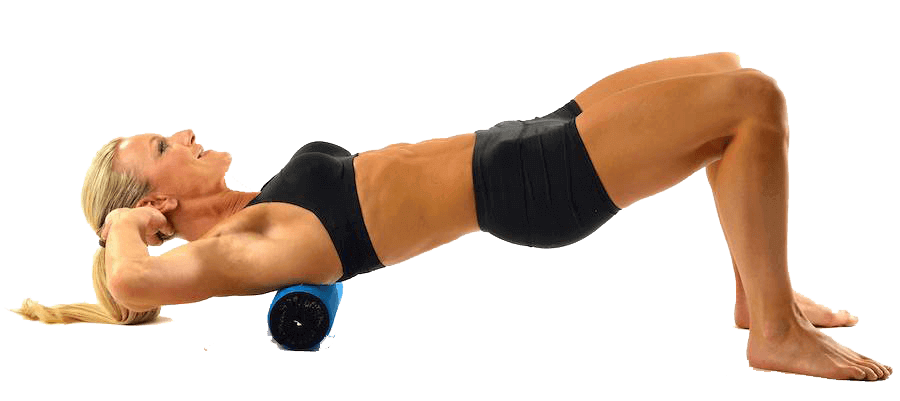
Foam rolling is one of the most effective techniques that can improve the mobility of your spine and correct your rounded shoulders.
- Lay the foam roller across your spine in the middle of your back just below your shoulder blades.
- Bend your knees properly, with your feet firmly planted towards the ground, and hands comfortably on your head.
- Lift your hips off the ground, then roll forward so the foam roller travels down your body an inch, then drop your hips to the floor.
- Repeat it until the foam roller is hanging a couple inches below your neck, then slowly roll back down following the same technique.
- If you feel any stiffness, stay roll back and forth on top of the area for a few seconds.
Close Grip Row
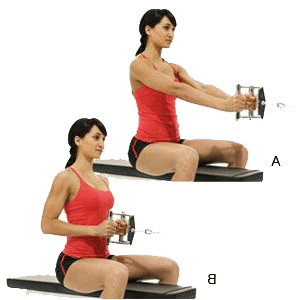
The exercise is helpful to correct a stooped posture and can be done seated using a cable machine or standing using a resistance band.
- Wrap the resistance band around a stable object at chest level and walk back a few feet until you feel moderate tension on the band.
- Your arms should be extended with a slight bend in your knees and feet placed shoulder-width apart.
- Keep your head up, chest out, shoulders back, back straight, and abs tight, then slowly pull the bands toward the sides of your torso and squeeze your shoulder blades.
- Slowly resist the band until your arms are fully extended.
- Complete two to three sets of ten repetitions.
What Causes Hunchback?
Poor posture leads to an excessive rounding of the upper back. If you are one of those hunchback people, you can fix your hunchback by making a conscious effort to stand up straight and have good posture. But if it leads to more problems, standing up straight won’t work; you will need proper treatment.
Here is a brief list of the muscles that get affected. As you can see, any muscle involved in moving the shoulder blades, supporting the spine, or maintaining correct hip posture will influence your postural alignment.
- Hip extensors
- Hip flexors
- Spinal erectors
- Trunk flexors
- Internal rotators such as the muscles in your chest
- External rotators such as the muscles of your upper back and the rear of your shoulders.
- Shoulder blade muscles including elevators, retractors, and depressors.
Exercises to Fix Bad Posture
Below are a handful of exercises that will help you get rid of your poor posture.
Pectoralis Minor Stretch
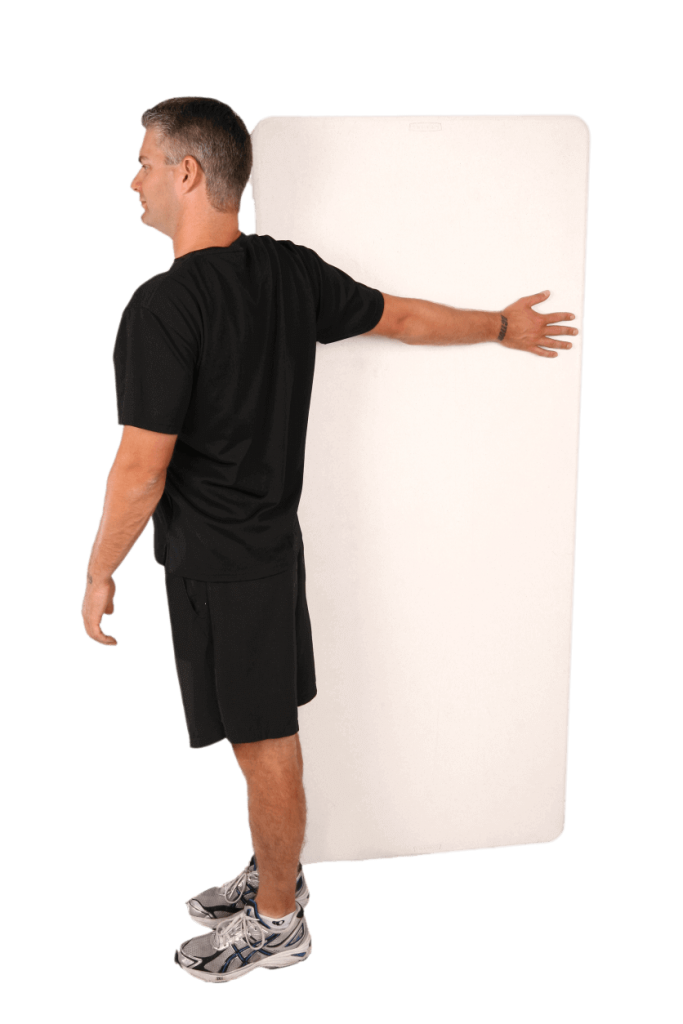
- Relax into this minor stretch and let gravity do all the work.
- On a bench, lie down on your back.
- Roll up a small and soft towel and place it horizontally along your spine between your shoulder blades.
- Raise your arms overhead like you are making the letter Y and your elbows can be slightly bent.
- Relax and let gravity pull your arms down towards the ground, opening up your chest.
Reverse Crunch
- Lie on your back on the floor in a crunch position.
- Hold a kettlebell or heavy object behind your head.
- Slowly roll your hips off of the mat, pressing your lower back down into the ground and squeezing your abs.
Wallslide to Liftoff
- Face a wall with your forearms on the wall. Keep your abs engaged as you slide the forearms up the wall.
- At the top position pinch your shoulder blades together and tip them backward, lifting your arms off of the wall.
- As you do the movement, feel the shoulder blades moving up and around the ribcage with the wall slide, and with the liftoff portion, you should feel the muscles of the upper back working to bring the shoulder blades together and tip them backward.
Balloon Breathing Exercise
- Lie on your back with your feet flat against a wall and hips and knees bent at 90 degrees. Place a 4 to the 6-inch ball between your knees.
- Place your right arm above your head and a balloon in your left hand.
- Inhale through your nose and as you exhale through your mouth, perform a pelvic tilt so that your tailbone is raised slightly off the mat.
- Inhale through your nose and breathe out into the balloon.
- Pause for 3 seconds with your tongue on the roof of your mouth before you inhale again. Do not straighten your neck or cheeks as you blow out.
- After blowing out four times, take the balloon out of your mouth. Repeat this cycle four more times.
Curved Back Exercises for Good Posture
While some curvature in your lumbar spine is expected, an imbalance in the muscles of your core and hips can lead to excessive problems and result in low back pain. Try these curved back posture corrector exercises:
Braced Marching

- Lie on your back with your knees bent and your feet on the floor.
- Tilt your pelvis backward as you flatten your low back against the ground.
- Hold this tilt and slowly alternate marching each leg up and back down again.
- After completing 10 repetitions with each leg, take a rest.
- If able, do two to three sets of this exercise.
Plank
- Place both forearms on the ground and lift your body up onto your toes.
- Engage your abdominals and hold your spine straight as you maintain this position.
- After 10 seconds, take a break before repeating the exercise 10 times.
- Make sure to keep breathing steadily as you hold your planks.
Bird Dog
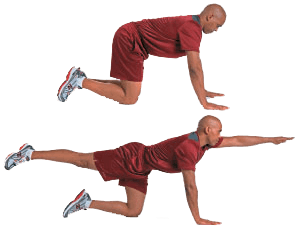
- Get onto your hands and knees and flatten your low back by engaging your abdominal muscles.
- Lift and straighten one arm in front of you and the opposite leg behind you without allowing your pelvis to tilt.
- Hold this position for 10 seconds before lowering your extremities back to the ground and repeating with the alternate arm and leg.
- Complete 10 repetitions on each side before taking a break.
How to Fix Curved Back
Strengthening your abdominals play many vital roles. Not only do they contribute to the stability of your spine, but these muscles also tilt the pelvis backward or posteriorly. It helps to decrease the curvature in the lumbar spine and to remove the strain on the muscles of your low back.
Planks and braced marching are some practical exercises for strengthening your abdominals.
When your pelvis tips forward and your low back becomes more curved, the muscles that line your lumbar spine become shortened and tight. By stretching these muscles, you can increase the mobility in your pelvis and return to an average amount of curvature in your low back.
Exercises like a bird dog can help you correct your swayback posture.
Neck Exercises for Posture Corrector
The neck hump is an enlarged prominence formed at the neck’s lower region; in other words, it is that big bump that sits at the base of your neck, called as dowager’s hump. Check out the below to see how to get rid of it.
Pro tip: You can use the Neck Posture Corrector Device instead of the exercises. If not, then find and choose the best posture corrector for yourself.
Forward Head Posture Exercises
Here are some of the most effective forward head posture exercises:
Tennis Ball Neck Exercise
Tennis ball neck release is an exercise done with the use of tennis balls or something of similar shape. It makes a great tool to release the tension in the muscles of this area.
- The ball should be placed under the head such that it presses into the areas under the base of the skull.
- Rotate your head from side to side to so as to put pressure on certain areas.
- If it starts to hurt, then you are doing it in the right area and try to get a solid 5 minutes on this region.
- Repeat on the other side.
- If tennis balls are not available then pressure to the same region can be applied by gently pressing with your thumbs.
- In case there is dizziness or worsening of the pain, then decrease the pressure on the neck.
Chin Tucks
After the tight and stiff neck muscles are loosened, then strengthening exercises for the neck muscles should be done for achieving the correct position of the head.
- Sit straight and gently tuck your chin in so that it looks like a double chin.
- A gentle lengthening sensation can be felt at the back of the neck.
- Do not move your head up/down.
- Make sure that your eyes and jaw stay level.
- Move the head slowly and horizontally backward.
- Hold this position 5 seconds and repeat it at least 25 times.
Front Shoulder Stretch
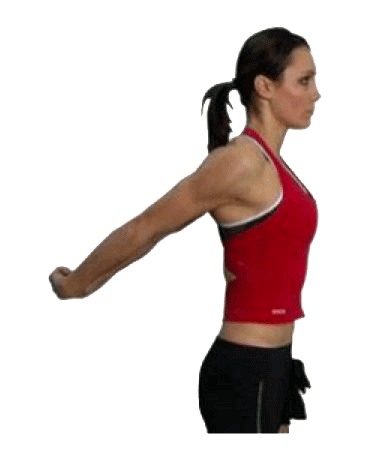
Forward head posture can cause tightness in the front of the chest and shoulders due to hunching up of the shoulders. The following exercises help in expanding the front of the chest and shoulders.
- Place your hands behind you on a chair.
- Squat down slowly till there is a stretch felt at the front of the shoulder.
- Make sure to keep an upright posture.
- Avoid flaring your elbows out.
- Hold this position for at least 30 seconds.
- Repeat 3 times.
Disc Fusion
Spinal fusion, also known as disc fusion, involves techniques designed to mimic the normal healing process of broken bones. During spinal fusion, your surgeon places bone or a bone-like material within the space between two spinal vertebrae.
Because spinal fusion surgery immobilizes parts of your spine, it changes how your spine can move. It places additional stress and strain on the vertebrae above and below the fused portion and may increase the rate at which those areas of your spine degenerate.
Neck Hump Exercises
If you want to know how to get rid of a neck hump, these exercises would definitely help you.
Neck Retraction Stretch
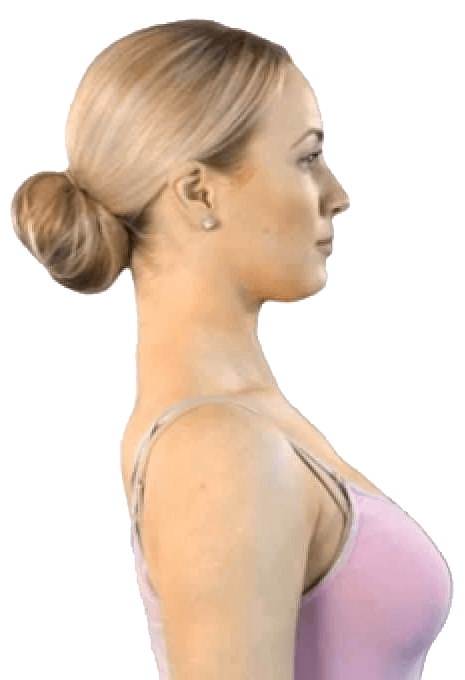
The neck retraction is a stretching exercise to correct the hump on the back of a neck. The sternocleidomastoid muscle of the neck lengthens during this exercise. The splenius muscle stretches, too.
- Stand or sit up straight with your feet a few inches apart.
- Place your hands on your hips.
- Tilt your chin down, but do not round your shoulders.
- Keep your shoulder blades pulled back toward each other.
- Then, pull or retract your neck back as far as you can.
- Exaggerate the stretch until it looks like you have a double chin.
- Hold for the desired length of time, and then relax.
Machine Neck Hyperextension

Strengthening your neck extensors can also correct a forward head so that your neck vertebrae stay in their proper position.
- Sit on a weight machine and place the rear of your head against the lever neck pad.
- Hold the handles of the machine with your elbows bent, and place your feet flat on the floor.
- Then, extend your neck backward as far as you can against the neck pad.
- Bring your neck forward to complete a machine neck hyperextension.
Yoga for Kyphosis
If you practice certainly targeted yoga poses every day, you can reduce the severity of your kyphosis.
Downward Dog Pose

The Downward Dog is one of the most popular poses for many ailments. It is great for strengthening the spine and building lower body.
- Get down on your hands and knees.
- Now straighten your knees and push them towards the lower body.
- Once your legs are extended completely, raise your hips.
- Your heels should be off the ground.
- Hold this pose for 45-60 seconds.
- Rest and repeat twice.
Cat Pose
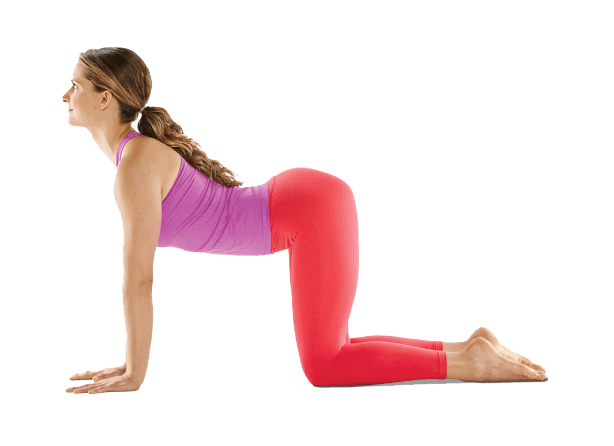
Like most yoga asanas, the cat pose has other health benefits as well. It also holds the distinction of being one of the best kyphosis yoga poses.
- First, get down on your hands and knees.
- Keep your spine straight and parallel to the ground.
- Your arms should be placed directly beneath the shoulders, while your knees should touch the ground.
- Press your back up and down in arching motions. Don’t jerk into motion, raise and lower you back rhythmically.
- Repeat this motion around 15-20 times.
- Rest.
Hump Back Exercise for Accurate Posture
These are the best exercises for posture, especially for the back muscles.
Reverse Tabletop
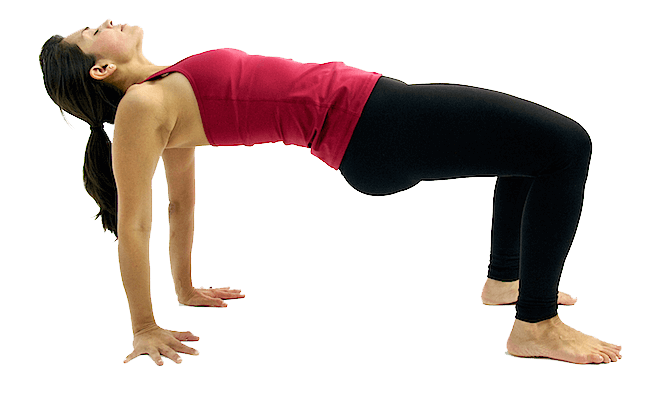
- Sit with your knees bent, feet flat on the floor, and palms directly behind the body with your fingertips pointing toward your butt.
- Inhale, gently pressing into your hands and feet to lift your butt off the floor, extending your hips toward the ceiling.
- Exhale and draw your shoulder blades toward each other to open your chest while carefully lowering your head back and tilting your chin up.
- Hold for 15 to 30 seconds.
- Repeat until you’ve stretched for a total of 60 seconds.
T-Spine Mobility in Child’s Pose

- Place one hand behind your head with your elbow pointing toward the floor.
- Rotate your chest until your elbow points to the ceiling.
- Lower back to the starting position.
- Do 6 to 10 reps, then switch sides.
Upper Spinal Floor Twist
- Lie on the floor on your side with your knees and hips bent to 90 degrees and your arms stacked straight out in front of you.
- Hold your knees together with your bottom hand and open up your top arm towards the floor behind you.
- Turn your head to look in the direction of your top arm. Keep your knees stacked and breathe! Hold for 1-2 minutes on each side.
Life extension
- Begin standing tall, knees soft, core engaged, chest upright, and shoulder blades back and down.
- Once you find yourself in an ideal posture, raise your arms up into a Y position with your thumbs pointed behind you.
- In this position, take two to three deep breaths, focusing on maintaining this posture on exhale.
What is kyphosis?
There are three main types of kyphosis: postural, Scheuermann’s, and congenital. Most forms of kyphosis do not require any treatment. Physical therapy and exercise are often effective in postural and Scheuermann’s kyphosis. Significant congenital kyphosis and more severe cases of Scheuermann’s kyphosis require surgery.
Postural kyphosis is the most common type of kyphosis. This is more common in girls than boys and typically appears during adolescence. Poor posture (slouching) and a weakening of the muscles and ligaments in the back cause postural kyphosis.
Scheuermann’s kyphosis also first appears during adolescence. This type of kyphosis results from a structural deformity of the vertebrae. The diagnosis requires X-rays, and physicians do not understand the reason for this abnormal wedging of the vertebrae.
Congenital kyphosis is the least common type of abnormal kyphosis. Abnormal development of the vertebrae during development before birth causes congenital kyphosis. This can lead to several vertebrae growing together (fusing) in kyphosis.
Kyphosis Surgery
In some cases, the physicians recommend surgery for Scheuermann’s kyphosis. Surgery aims to partially correct the deformity of the kyphosis, relieve pain, and improve your overall spinal alignment.
Various types of surgical procedures are available depending on each case’s specifics. Surgery can be performed from the front, back, or both. A surgeon makes the decision based on the specific characteristics of the spinal curve.
Treatment of congenital kyphosis often involves surgery while the patient is an infant. An abnormality in the developing vertebrae causes congenital kyphosis. Surgical treatment earlier in life can help correct the spinal deformity before it worsens.
Take Care of your Posture
A good posture is a form of fitness in which the body’s muscles support the skeleton in an alignment that is stable and efficient. This state of being called good posture is present in stillness and movement.
To ensure long-term changes, you must become more conscious of posture when standing and sitting. Human beings are not designed to sit in an office all day. We are built to move. Getting out of your office chair to walk around several times throughout the day can go a long way.
Follow a Proper Exercise Program
Researchers looked at the effect of different exercises on kyphosis. They found that strong back muscles can better counteract the forward pull on the spine. That means exercises that strengthen the extensor muscles can decrease the angle of kyphosis.
If you do a lot of bench presses, curls, and crunches, combined with reclining in a chair all day long, kyphosis can worsen. Be sure to stretch your chest muscles and incorporate leg and back exercises into your fitness routine. An effectively structured fitness program can help improve your posture, functional strength, and overall health and well-being.